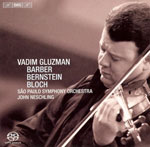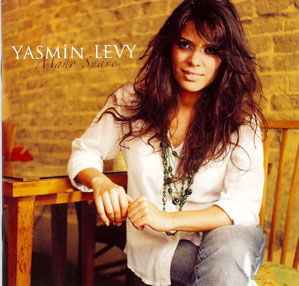
Yasmin Levy Mano Suave 4Q FQT-CD-1817
- Performance:

- Sound:

Singer/songwriter Yasmin Levy has built an estimable reputation as a champion of Ladino music, the ancient music of the Sephardic Jews of Spain. Singing Ladino, Beduin, and original Ladino-like songs, sometimes imbued with Turkish or Flamenco influences, Levy is on a mission to preserve and promote a language and culture facing extinction.
Since making her international debut at the WOMEX International World Music Expo in 2002, Levy has released four albums. The first, Romance and Yasmin, was nominated for a BBC World Music Award; the second, and more experimental disc, La Juderia, received additional acclaim. After releasing Mano Suave in the U.S. , she embarked on her first U.S. tour in the fall of 2009.
Levy’s low-voiced, remarkably flexible throaty instrument seems like a channel to olden times. Singing of love and longing, even performing an original setting of Psalm 118: 21-22, her highly evocative, wailing delivery cuts across cultural boundaries. One moment you think you’re listening to the daughter of a Hassidic cantor, the next you wonder if she may be Iranian or Turkish.
“Mother, I long for Jerusalem,†sings Levy on the first track of Mano Suave. Although the song and lyric are traditional, they’re especially fitting for a Jerusalem-born artist who heard her first Ladino songs in the kitchen, sung by her mother. “I took them from the kitchen to the stage,†she says about her stage debut at the age of 20.
Before devoting herself to song, Levy worked on cars in a garage and opened her own reflexology clinic. The latter endeavor was short-lived; even as she was seeing her very first patient, she discovered her mind far more on song than on pressure points. These days, she uses song to heal centuries-old divisions, and serves as a Goodwill Ambassador for Children of Peace, a UK-based charity fighting to alleviate the plight of all children caught in the multi-national Middle East Crisis.
Yasmin Levy’s haunting voice, filled with the heart and passion of a people who have survived centuries of persecution and misunderstanding, is certain to attract a huge following. Best to hear her now, before she becomes idolized in the manner of Cesaria Evora and other great artists whose voices seem to sing directly from their soul.
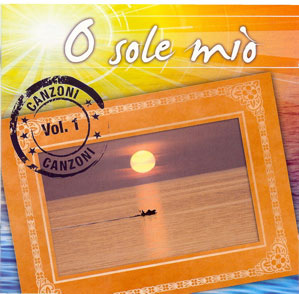
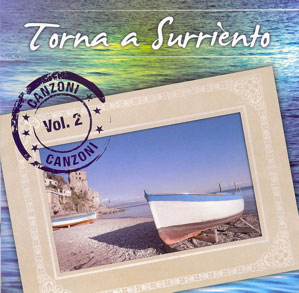
O Sole mìo Canzoni Vol. 1 Preiser Mono 90766
Torna a Surrìento Canzoni Vol. 2 Preiser Mono 90767
- Performance:

- Recording:

For lovers of classical vocal music, the Preiser label is a goldmine. Specializing in historic reissues of vocal and instrumental performances that date back to the dawn of acoustic recording, the label is known for its minimally intrusive, immaculate transfers of rare performances. In an effort to minimize surface noise, Preiser does filter out some of the highs, but the resultant compromise retains much of the beauty of the originals without all of the clatter.
These two volumes of historic recordings of Neapolitan songs are a special treasure. As an example, take one selection out of 49, Hina Spani’s recording of “O primavera†(O springtime). I played this at a student orientation session for the vocal music classes I teach for Osher Lifelong Learning in Berkeley and San Francisco. Spani’s voice is so extraordinary in its dramatic power and beauty that people actually applauded after the first verse.
Although Preiser usually keeps liner notes to a minimum, these discs at least include an introduction to the Neapolitan genre and English translations of the songs. (The original Italian is absent). Explaining that the music and lyrics are inspired by everyday themes, Laura Wagner-Semrau writes in the liner notes, “The songs embody the sunny climate, picturesque landscape, colors of the sky and sea, and, not least, the Italian temperament. †That’s certainly how they sound.
Many of these songs were written in either the 19th or early 20th century for the Festa di Piedigrotta, and were sung in competition. Among the prizewinning songs were “Santa Lucia†(1850), “Funiculì, funiculà †(1880, here sung by Alessandro Zilani), “O marenariello†(1893, here sung by the great, incomparably refined Tito Schipa), “O sole mio,†(1898, included twice in versions by Enrico Caruso and Dusolina Giannini), “Torna a Surriento†(1902, sung by one of Caruso’s successors, Giovanni Martinelli), “Core ‘ngrato†(1911, sung by another great tenor, Giacomo Lauri Volpi), “Guapparia†(1914), “Reginella†(1917, sung by Giuseppi di Stefano), “Silenzio cantatore†(1922, again sung by di Stefano), and “Dicitencello vuje†(1930, sung by Mario Lanza).
This is not to say the other songs included in the collection are any less appealing. “Colombetta,†for example, is sung by the irreplaceable artist who made it her own, the divine Claudia Muzio. Other great songs are “Dopo!†(Gianna Pederzini), “Mattinata†(Mario Ancona), “Ciribiribin†(Lucrezia Bori), “La serenata†(Frances Alda), “Luna d’estate†(Rosa Ponselle), “L’ultima canzone†(by the great albeit Spanish Conchita Supervia), “Mattinata†(Dmitri Smirnov), and “L’alba separa†(Jussi Björling). The voice and inflections these singers bring to this music are so right that it’s hard to imagine other artists in this repertoire.
Most but not all of the singers chosen by Preiser are household names in the history of great 20th century vocalism. If you’ve never heard Riccardo Stracciari, for example, be prepared to take seriously half the baritones before today’s public once you hear him sing “Occhi di fata. †And some of the lesser-known artists sing so well that you may begin to question why other artists became more popular.
Taken as a whole, these two sets present an invaluable collection of idiomatic performances, peerlessly sung with all the heart and passion the music requires. To any lover of classical singing, they are indispensible.
Versions of the following reviews originally appeared at sfcv.org, the website of San Francisco Classical Voice
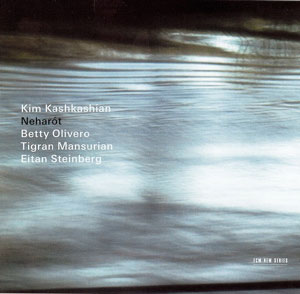
Kim Kashkashian, Betty Olivero, Tigran Mansurian, and Eitan Steinberg Neharót1 ECM New Series 2065
- Performance:

- Recording:

“Oh no,†a distraught Bay Area critic once said to me upon receiving a pile of just-released discs from ECM New Series. “Not more depressing Eastern Europe music!â€
While that lament does describe one aspect of award-winning producer Manfred Eicher’s M.O., it does not begin to encompass the transcendent vision that leads him to champion new classical and jazz works with a global perspective. Nor does it fully describe a disc such as Neharót, whose heart-touching beauty, subtlety of instrumentation, and boundary crossing prayer for release from longing defy categorization.
Israeli composer Betty Olivero began writing Neharót Neharót in July 2006, as images of death and suffering from fighting in Hezbollah in Lebanon dominated public consciousness. Beginning with a dark, dreary dirge, the work’s subtle textures amidst dense rumblings have a hypnotic pull. Distinctly Kurdish and North African strains of lamentation take voice in a gorgeous duet for An Raskin’s accordion and Kim Kashkashian’s viola, giving way to, of all things, a version of Orpheus’ lament from Monteverdi’s Orfeo. As the taped voices of Lea Avraham and Ilian Elia intertwine, strains of other works by Monteverdi blend together to create a borderless lament for the ages.
Two shorter works by Tigran Mansourian follow. Tagh for the Funeral of the Lord, based on ancient Armenian songs, blends the light of percussionist Robyn Schulkowsky’s bell-like vibraphone and gongs with Kashkashian’s darker viola. Oror finds Mansourian on piano, in an arrangement of a lullaby by Komitas whose beauty and airy simplicity speak with compelling eloquence.
Next comes Gil Rose’s Boston Modern Orchestra Project performing Three Arias (Sung out the window facing Mount Ararat), a work Mansurian wrote for BMOP and Kashkashian. In the last of the wordless arias, the viola’s exquisite song acts like a healing balm, soothing grief for that which is no longer within reach.
Eitan Steinberg’s Rava Deravin for viola and string quartet is based on a Hasidic setting of a 16th century poem by kabbalist Rabbi Yitzhak Lurya. Originally written as a prayer for voice and small ensemble, it here takes voice in a special arrangement for viola and the Kuss Quartet. Kashkashian’s eloquent instrument provides the warmth amidst cries of pain from the higher strings.
Don’t let the initial darkness of this CD’s opening chords dissuade you. The universal threads of prayer that unites the pieces on this disc transcend pain, creating a life-affirming beauty all their own. This disc deserves to meet with widespread critical acclaim.
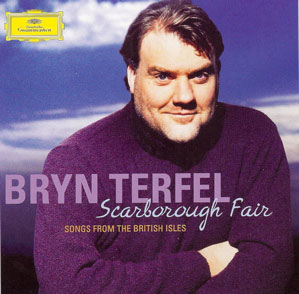
Bryn Terfel Scarborough Fair DG 001264202
- Performance:

- Recording:

Could a performance be so bad as to destroy a nation? As powerful as bass-baritone Bryn Terfel’s voice may be, it’s not strong enough to sink the British Isles by itself. But were you to play the great Bryn’s latest CD, Scarborough Fair: Songs from the British Isles (Deutsches Grammophon B0012642-02), loud enough, the combined forces of Terfel’s magnificent instrument and Chris Hazel’s insufferable arrangements for the London Voices and London Symphony Orchestra, unsparingly conducted by Barry Wordsworth, just might do the once imperious empire in.
The first track, Ireland’s traditional “Carrickfergus,†starts out with one of the sweetest, gentlest vocal lines Terfel has ever recorded. He’s as seductive as can be… until he opens up the voice. Not only does he sound stentorian and overdone, but the soppy cymbals in the accompaniment also flash an alert: Beware the swamps of sentiment and cesspools of excess that lie ahead.
What can you do when the swamps advance faster than you can retreat? Anyone other than a critic can quickly skip around the CD, flee the room, or return it to their retailer with the explanation that playing it clogged up the plumbing and induced digestive distress. But he who must faithfully report can only resort to typing as the CD plays, hoping thereby to distract himself from the sop.
Those who love Simon & Garfunkel’s touching rendition of “Scarborough Fair†will welcome the prospect of a duet between Bryn and the gorgeous soprano Kate Royal. Until they listen. Then we discover a heavily dramatized version that overwhelms the song’s simplicity. Similarly, we who did not know how sentimental a first love can be need only listen to Welsh traditional ballad “Cariad Cyntaf†to learn otherwise.
The military drum at the start of “Loch Lomond†seems an insightful commentary, until it builds to the point that the whole chorus, strings, trombone, and timpani join in. Then we wonder what really did the soldier in, battle or bombast? The major chord finish is the final death-blow. As are dreamboat Roman Keating’s pop contributions to the world’s soppiest version of “Danny Boy,†and the full monty chorus that contributes woo-woos as our Bryn sings of the death of “Molly Malone.â€
Floundering without a life raft, I committed an act of self-love by skipping at least six tracks. But I did listen to the closing “Ae Fond Kiss,†a traditional Scottish folk setting of poetry by Robert Burns. Its Uillean pipes, percussion, full orchestra, and overdone vocal line provide conclusive evidence that no one involved with this project chose to learn from the exquisitely spare, emotionally trenchant folksong settings of Benjamin Britten. With “warring sighs and groans†doth Burns’ poetry and this review end.
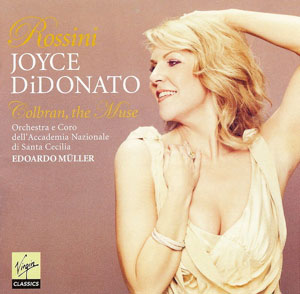
Joyce DiDonato Rossini-Colbran, the Muse Virgin Classics 94579
- Performance:

- Recording:

By the time she completes the first astounding 50-second musical statement of “D’Amor al dolce impero†(To the Sweet Rule of Love), mezzo-soprano Joyce DiDonato has delivered her calling card. The soaring high notes, seamless runs, and imperious declarations she tosses off performing the unrelentlessly demanding second act finale from Gioachino Rossini’s opera, Armida, establish in no uncertain terms that she is a major artist at the height of her powers.
The Armida tour de force, the first of seven demanding arias on a disc packed with enough flawless trills and high climaxes to satisfy the most demanding opera lover, introduces DiDonato’s long-awaited Rossini recital. Filled with music inspired by the composer’s Spanish muse and eventual wife, Isabella Colbran, the selections on Rossini-Colbran, the Muse (EMI Classics) are often sung by high coloratura sopranos. But as Philip Gossett points out in his extremely literate liner notes, Colbran’s voice seems to have spanned both mezzo and soprano registers. Hence mezzos such as Frederica von Stade and Cecilia Bartoli, and sopranos such as Montserrat Caballé who do not extend above high C, have also embraced Colbran’s repertoire.
Although the demands Colbran placed on her voice led to her premature decline – she seems to have peaked around the age of 30, as did Maria Callas – DiDonato is going strong at 40. Her control is formidable in florid gems such as “Tanti affetti in tal momento†(So many emotions at such a moment) from La donna del lago and “Bel raggio lusinghier†(A sweet alluring gleam) from Semiramide. The variations, which she mostly composed herself, are extremely elaborate in ways that recall artists of a much earlier era. Listen to her perfect high trill 90 seconds into “Fra il padre†(Between my father), the rapid final section (cabaletta) of “Tanti affetti,†and the force with which she races through the showpiece’s final runs. If this is not great singing, what is?
One thing DiDonato does not offer, however, is melting sweetness. (Either did Callas, although she offered in its stead a touching fragility that does not seem to be DiDonato’s strong point). As beautifully as she sings “Giusto ciel, in tal periglio†(Just Gods, in so great a peril) from Maometto II, she does not tear at the heart. Nor is the start of the Willow Song from Otello as moving as others on record.
But when DiDonato gets going, as in the Finale to Act III of Armida, watch out! As cymbals clatter, percussion thunders, and lines such as “Destroy everything here, everything†(Distrutto tutto qui resti, tutto) are hurled off, you may find yourself shouting “Brava†at your speakers. At some point during your listening, the corn-fed Diva from Kansas will likely take your breath away. This is one take no prisoners mezzo.
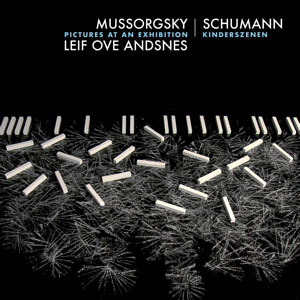
Leif Ove Andsnes & Robin Rhode Pictures Reframed EMI Classics DVD and CD 98360
- Performance:

- Recording:

Pictures Reframed, a multimedia presentation of Mussorgsky’s Pictures at an Exhibition that unites the pianism of Norway’s Leif Ove Andsnes (b. 1970) with the graphics and film of South African visual artist Robin Rohde (b. 1976), is a stunning achievement. Far more than just another multimedia collaboration for our multi-tasking, iPod-toting era, it brilliantly illumines Mussorgsky’s achievement in ways that transcend the literalism of words, images, and notes on a page.
At the same time that Andsnes is touring Pictures Reframed from Moscow to Houston (the closest it gets to the Bay Area), EMI Classics has released an elaborate package consisting of a 152-page, coffee table size picture book that weighs over 2 lbs. ; a DVD that contains a wonderfully filmed live performance of Pictures Reframed and a 50-minute documentary, Leif Ove Andsnes – Reframed; and a studio-recorded CD that pairs the Mussorgsky with Schumann’s Kinderszenen. While the CD is also available separately, the only way to see Pictures Reframed, short of flying to Houston, D.C. , New York or London, is by buying the entire package.
The DVD is pretty spectacular. The final “picture,†in which Rohde merges Andsnes and Mussorgsky’s take on the “The Great Gate of Kiev†with the murder-by-drowning of a grand piano, sounds as outrageous as it is bizarre, but it works. There’s no way to adequately describe how uncontrolled water rushing through the strings and over keys complements Andsnes’ controlled pounding over same, save to say that the artistic union so transcends the sum of its parts that it’s difficult not to cheer at the ungodly sacrifice of art in the name of art.
Equally moving is the documentary. From shots of Andsnes at the start of his spectacular career to scenes of the burgeoning friendship between the classical artist and the visual artist who adores rap, it eloquently explores the collaboration between two equally dedicated but distinctly different personalities.
Because the Pictures recording was born out of multimedia merger, it seems more useful to discuss the studio recording of Kinderszenen, which was always intended to stand by itself. Andsnes’ pianism is of course impeccable and beyond reproach, the recording a little distant and resonant but quite clear. The contrast, however, with another recent Kinderszenen from EMI, on pianist Martha Argerich and violinist Gidon Kremer’s live The Berlin Recital, could not be greater. Besides the acoustics – Argerich’s piano is recorded closer-in, with more vibrancy on top – her fluidity, frequent changes of tempo, and poetic use of rubato sing a different tune than Andsnes’ straight ahead approach. I suppose the Norwegian’s simplicity is, in one sense, more childlike. But hearing Argerich dance and sway over the keys, and savoring her mercurial shifts of genius is like experiencing the golden age reborn.
I expect you’re hearing a lot about Pictures Reframed in these days following its November 13 New York premiere. The only way to know what the much-deserved fuss is about is to spring for the entire, perfect-for-holiday-giving package.


